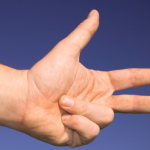 |
Feelings of dizziness can significantly interfere with your life and limit you from doing many of your normal activities. Many people are unaware of Vestibular Physiotherapy, and how it can help treat dizziness, sometimes immediately! Currently, most people when experiencing dizziness will go to seek medical attention. Unfortunately, one study showed only 8% of individuals received effective treatment in this route. In this blog, we will discuss Vestibular Physiotherapy, a lesser known specialty of Physiotherapy. Vestibular System and Dizziness Our vestibular systems, composed of the inner ear and the brain, are responsible for our awareness of head and eye movements…
Read More










